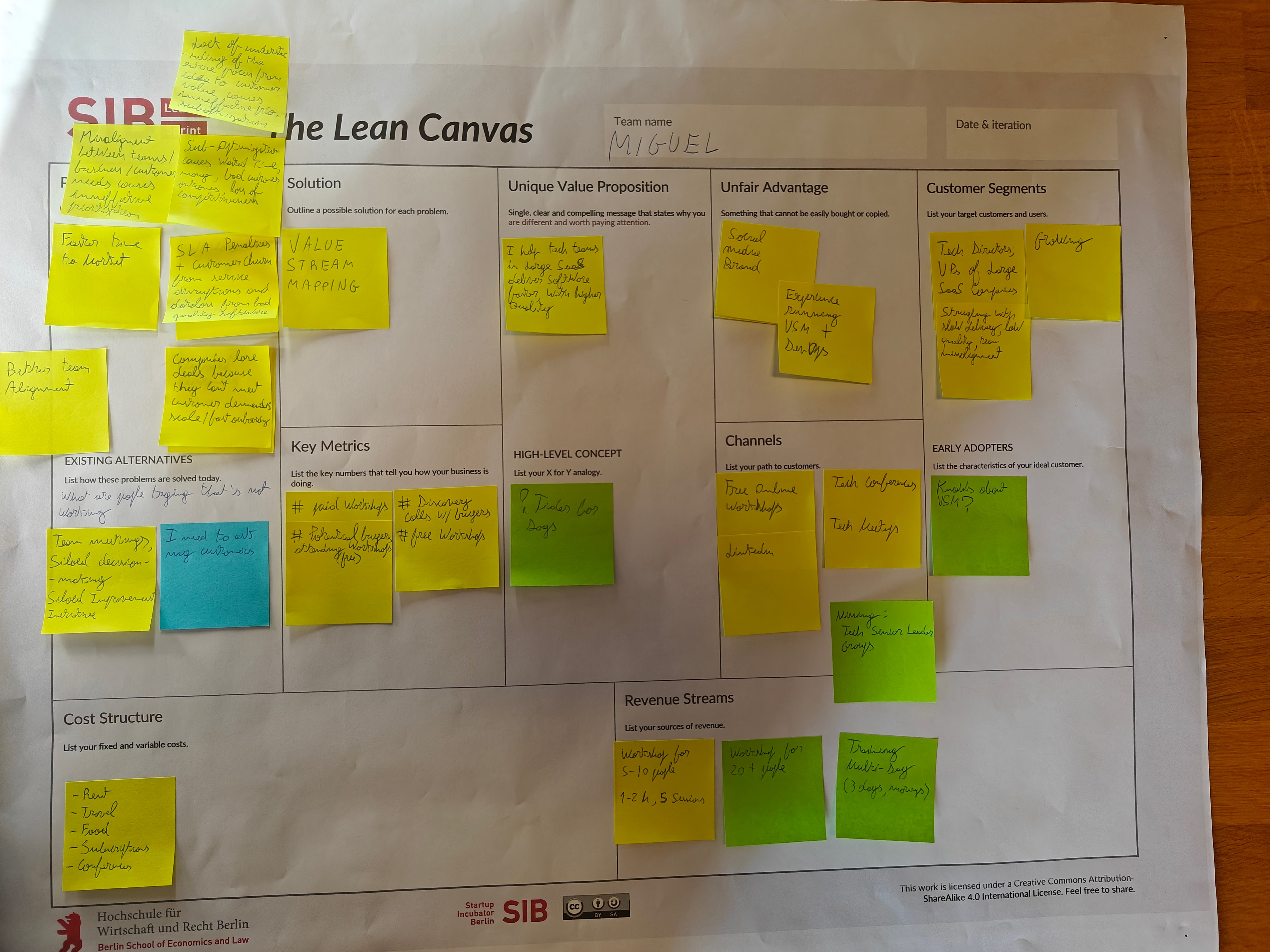Clarifying the Problems VSM Solves

This was the first day of the 2 week incubation program at CIC Berlin by the Berlin School of Economics and Law.
I talked about my motivation to join the program in my previous post.
Clarifying the Problems VSM Solves
While working on a “lean canvas” of my business (in the image). The facilitator called out something important: I was describing outcomes (better alignment, higher quality, faster onboarding) instead of the actual problems people face.
Here are the problems I help technology VPs and Directors address:
Technology investments are seen as a cost center, leading to disinvestment and bad customer outcomes
Most importantly: How do we show technology investments are generating returns? VSM provides the thermometer for measuring value delivery efficiency, proving to business and finance how technology work drives market share, revenue growth, and reduced churn.
Teams work on the wrong priorities leading to wasted time and money
Teams work on the wrong priorities because they don’t understand how their work connects to customer value, leading to wasted resources and competitive disadvantage. This happens due to scale, and you need to address this intentionally, it gets worse by itself.
Releases cause expensive disruptions
Releases can cause service disruptions, impacting churn cross and up-sell opportunities. I’ve seen fixing customer problems and managing escalations consume 25-50% of team capacity across multiple engineering teams. Expensive.
Slow onboarding or inability to scale loses deals
Slow onboarding or inability to scale to meet customer demands means losing deals to competitors and delaying customer value realization, directly impacting revenue and retention.
Can’t deliver features fast enough to stay competitive, close deals, scale to meet customer demands
Inability to scale or deliver features fast enough means losing deals, missing investment opportunities, and falling behind competitively - leading to disinvestment, reorgs, and layoffs.
Teams optimize locally and end up working against each other, and against business results, which nobody wants
Teams can’t identify their biggest constraints because they lack end-to-end flow visibility and metrics. Ex: product pushes for that extra feature at the end of the release, skips tests, causes service disruption and a cascade of unplanned work for teams.